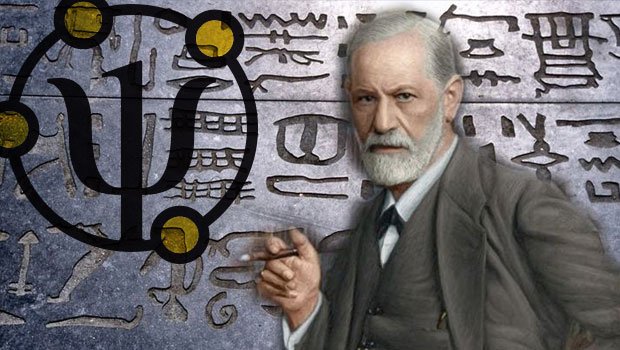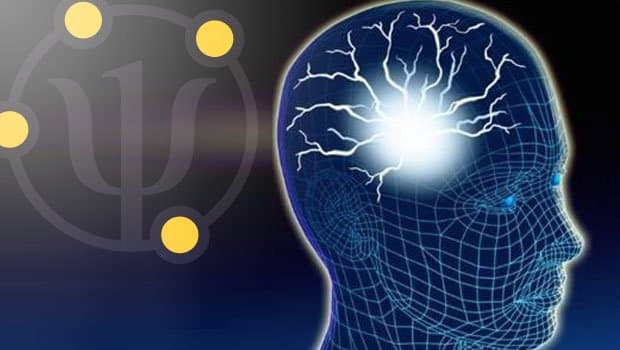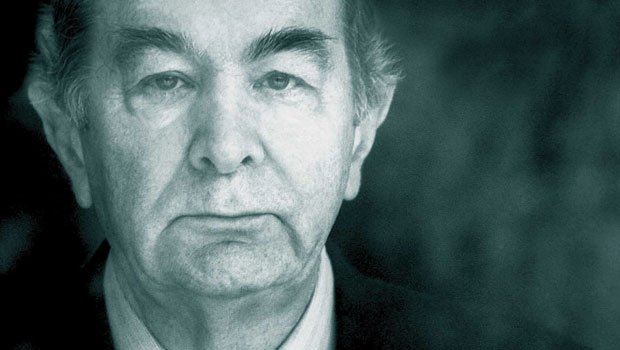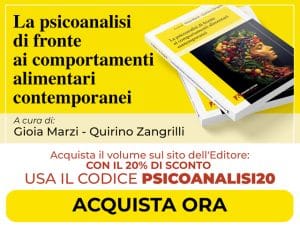In Aleksandr Romanovic Lurija’s beautiful work, dedicated to the Mnemonist Serasevskij’s case, the brief closing paragraph (a glance to the future) contains some affirmations which have stricken me: ” (Psychology) has not yet reached…the point of being able to describe the nature of the personality, in such a way that every function can be seen in its own relation with the total structure, and the laws of its formation become just as clear and precise as those of the synthesis of the composed chemical bodies”. 1
The Preface of Alberto Oliverio’s work, highlights how the neuropsychological knowledge, in Luria’s essay-novel, has remained stationery at the 60’s and it reflects the isolation of the Soviet psychology in respect to the western one. And how, I add, no trace can be found of Freud’s fertile discoveries about the psychic unconscious processes: as we know Psychoanalysis was banned from the Soviet state in 1936 (a destiny which is inevitable for any human activity which has as its aim the search for truth, beyond the social delusion of the projections and illusions); in this, both totalitarianisms of opposite signs reached a perfect concordance of intents.
In 1921, Lurija had even entered to be part of the restricted group of sustainers of psychoanalysis in Russia but under the ferocious control of the Soviet structures, he completely renounced his scientific faith, practically making a blank slate of the psychoanalytic principles.
Lurija invoked the precision of the laws which regulate the chemical processes. In my sessions, I have often found myself thinking that, the science I practice, (I do not use the term by chance) is similar to algebra, so indisputable are the results of a work which, neutralising the unknown reaches a result verifiable by several methods.
It is obvious that I cannot think that psychoanalysis allows the dissolution of any doubt, but I find incomprehensible, if not as an aggressive, anxious and compulsive response by the society, the continuous work of denial which Freud’s science has incessantly undergone since its dawning.
Could a psychoanalyst have added something to the unreachable analytic clarity of the psychological phenomenology shown by Lurija? I think so.

Or else, on the other hand, he expresses the praise of his therapist: “I realise that you don’t miss a thing, even when I approach some detail dealt with years ago once again, I understand from the contents of your intervention that you remember exactly what had been said”.
Whoever performs this work with the necessary capability knows that things are exactly this way.
Are all psychoanalysts mnemonists? Evidently not.
In everyday life, I believe I have a normal memory. The fact is that the analyst conforms himself to the respect of the fundamental analytic rule which consists in: the patient verbalising whatever comes to his mind, without operating any logical discriminating process, and the analyst listening neutrally to the free associations of his patient in a so-called state of suspended attention. In other words analyst and patient try to conform themselves, as much as possible, to the laws of the unconscious regulated by the primary process.
It seems to me that every patient makes the exact opposite journey every day, to that of the mnemonist. The patient ignores what he has to find, or better still he knows that in the widely extended net of his mind, in the unconscious compartment, there are memories which he must reach. To reach this aim, not without great resistances, he accepts to verbalise an apparently useless mass of details, connected by associative links, which are more or less explicit and will slowly lead him to the lost memory.
It will not escape the reader’s attention that Mr. Serasevskij made the opposite journey: from an accepted fact (the notion of remembering) he created imaginary events, often absolutely lacking in logical sense, which served as an associative path to retrieve the proposed notion. Whoever knows the psychoanalytic concept of the dream will realise that the Mnemonist created dreams with eyes wide open.
Dreams are in fact sophisticated and redundant appliances of memorising. Following Fanti’s, Pelluffo’s and M. Jouvet’s thought I am absolutely convinced that dreams are the cybernetic memorising instrument of the ancestral experiences of our ancestors. In a more profound psychic layer than we usually deal with, corresponding to the elaboration of the actual conflict, during the oneiric periplus, a systematic work of cybernetic programming, which creates the formal continuity of the human attempt, is incessantly accomplished.
The great scholar of psychosomatic U. Piscicelli affirms: “…the environment in which the foetus creates his own ontogenetic experiences is compared, through the REM activity, to the entire generation of the phylogenetic experiences inherited from the parents”. 2 This is in relation to the oneiric capability of memorising.
What else can psychoanalysis tell us about the thought structure of the Mnemonist? Another data which is coherent with the previous one: Mr Serasevskij sees things, not words.
Using the concepts of Piaget’s genetic epistemology we can say that his mind, or to be more precise, the mental processes of which the Mnemonist serves himself to retain his memories, stop at the threshold of the second phase of the infancy, precisely at the intuitive intelligent stage. As it is known, Piaget studied, in an experimental way, the mental representations that children made of the reality, building a psychology in stages (genetic) in which one passes from the concrete to the abstract (hypothetic-deductive) giving an experimental confirmation to the Freudian hypothesis of “In the beginning was the Id” which implies a development through differentiation, specialisation and loss of totipotency, similarly to what happens for the soma (the progenitor cells are totipotent, in other words they possess the memories to produce any cell of any apparatus of the organism).
Up until seven years of age, the child remains a pre-logical being and compensates for the logic through the intuition mechanism, simple internalization of perceptions and movements in the form of representative images and of mental experiences which prolong the previous sensory-motor schemes without any rational co-ordination and without any possibility of abstraction. 3
Freud would have said that the Mnemonist’s thought was mainly fixed on the “thing representation”. In his metapsychological writings, the Master distinguished two types of “representations”, that essentially visual which derives from the thing and that essentially acoustic which derives from the word. For Freud, while the preconscious-conscious system is characterised by the link between the “thing representation” and the correspondent “word representation”, a factor that determines the possibility of realising the process of abstraction and of symbolisation, the unconscious system only understands the “thing representations”.
In this sense, Jung uses the term “concretism” in his “Dictionary of Analytical Psychology”, giving us a notable contribution on a clinical level: “As concretism I intend, a determined peculiarity of the thinking and feeling process which represents the opposite of abstraction… It is not a differentiated concept but it is still material of intuition supplied by the senses. The concrete thinking moves between concepts and conceptions which are exclusively concrete and it is always in relation to the impressions supplied by the senses. Therefore, also the concrete feeling is never disjoined from a sensorial reference”. 4
Seeing the splendid film representation that the director Paolo Rosa made of this theme, the extraordinary synesthetic capability of the protagonist is evidenced.
Lurija reminds us that the mnemonist’s synesthesiae could be found in him since his tender childhood: “When (I would have been two or three) they began to teach me the words of a prayer in ancient Hebrew, I didn’t understand them, and those words came to deposit themselves inside me in the form of globes of vapour or of splashes…” 5
A modality of thought that recalls the primitive one, which remains adherent to the material appearance. The thinking and feeling activities of the primitive being are based on the sensation and they are distinguish very little from it. The concretism, Jung underlines, is therefore, an archaism. This confusion impedes a differentiation of thinking and feeling and contains both functions in the sensation sphere, in other words, in the sensorial reference; in this way thinking and feeling can never evolve themselves into pure functions but remain permanently dependent on the sensation.
In this way a sensorial connection is determined between the various psychological functions, a connection which impedes the psychic autonomy of the individual in favour of perceivable matter of facts.
An incomplete individual, one of the reasons for the maximum sufferance of Mr. Serasevskij.
Up until now, we have the idea of a person blocked at the primary process way of organisation: he would be a psychotic subject but Lurija reassures us saying that, in his opinion, it is not “a case of splitting of the personality, of which the psychiatrists are greatly interested”.
As is known in psychoanalysis, the hypothesis is formulated that particularly violent traumas, on the basis of a phylogenetically predisposed ground, can provoke the inhibition of particular functions, even in their totality (motor paralyses, aphasiae, language problems, which can be more or less extended). Therefore, a psychoanalyst would have searched in the material expounded by the subject for the trauma’s vestiges. The director’s choice to begin and conclude the film with that which, rightly so, can be considered a symptom, seems to me proof of great sensibility, I refer to the scarab’s illusion.
Let’s see how the patient himself describes it:
” ‘The scarab’: is the peeling of the chamber pot… these peelings are black… In the evening, when the lamps are lit, ‘the scarab’ also appears… In fact, not all is well lit, the lamp’s ray falls only on a small corner of the room, all around is dark. And there you are, ‘the scarab’… the hairy moles, even those are ‘the scarab’… And so I am placed in front of the mirror: there is a noise… they are laughing… And there, in the mirror, are my dark eyes: it is, once again, ‘the scarab’… Now I am lying in my cot; then there is a scream, a loud noise, threats… They are boiling something in the enamelled teapot… it’s my nana, she is making the coffee. She drops something red and she pulls it out… ‘the scarab’! The coal, even that is ‘the scarab’…”. 6
This brief sequence could be used as a perfect example in any psychoanalysis handbook as material relative to the so-called “primal scene”. As it is known, the primal scene corresponds to the scene of the sexual rapport between the parents, directly observed or hypothesised on the basis of certain signs, even confused or fruit of incomprehension, and phantasmatically elaborated by the child.
In general, the primal scene is interpreted as an act of violence with traumatic results caused by the father.
Black, as we all know, is the colour of the pubic area (at night other lighter colours also uniform themselves with the black) and often, in the clinical observation, we find that the genital area is perceived as a spider, or some other kind of dangerous insect.
The mirror is often the background where the scene is situated (sometimes the parents are careful to use a side of the bed which is difficult to be seen by the child’s direct prying eyes but they do not bear in mind the diabolical phenomena of the reflection!).
Mr. Serasevskij tells:
“And so I am placed in front of the mirror: there is a noise… they are laughing… And there, in the mirror, are my dark eyes: it is, once again, ‘the scarab’… Now I am lying in my cot; then there is a scream, a loud noise, threats…”
The sudden passage from the laughing to the scream and to the threats corresponds to the misunderstanding of the probable moans of pleasure of the partners and to the loss of control which accompanies an orgasm.
The result of this traumatic stimulus in the child’s mind is often the structuring of a mixed experience of anguish, waiting and confusion: the child “does not understand” what has truly happened.
In the passage which immediately follows, the Mnemonist still recalls some genital details: “something red” and the blackness of the scarab. An important detail is that this sequence refers to the nana who prepares the tea, an act which inevitably produces clouds and puffs of steam, the disturbing symptom which happened when the subject did not understand the sense of the events.
A psychoanalyst could easily continue his research and have the eventual comfort of the patient’s opinion: I like to imagine what would have happened if the police Terror had not deprived Prof. Lurjia of the scientific Freudian instruments.
It is obvious that we cannot reduce the exceptional mnemonic power of Mr. Serasevskij merely to the psychodynamic vicissitudes of his existence. It is certain that the Mnemonist’s mind would have interested, in a remarkable way, today’s cybernetic experts, above all the scientists who, nowadays, dedicate their energies to projecting the so-called quantum computers.
It is believed that the striking differences of performance between the human mind and the computer are given to the fact that computers are obliged to the deterministic binary logic: true/false, while the human mind contemplates vague or approximate concepts, which allow almost an infinitive number of solutions.
The thing which makes the human mind incomparable is what we could define its capability of quantum reasoning: the coexistence of states deterministically in opposition and of different times, the possibility of not contemplating the principle of contradiction, etc. in other words the modalities of functioning specific to the primary process the way they were described by Freud and which we find in the mechanisms used by the Mnemonist to create his “stories”.
To allow the computer performances to reach that of the human mind, scientists have been working for years to create the so-called “quantum computers”. The fundamental characteristic of these computers, still in a phase of theoretic elaboration, consists in the fact that they would allow very complicated and very powerful forms of parallelism. The possibility of parallel calculus procedures is founded on an central idea of the quantum mechanics, which is the idea of overlapping of quantum states.
In the application to computers and computations, the elements of quantum overlap of states give way to parallel branches of computation; therefore every branch represents the element of a quantum overlap. Naturally, to obtain a defined result all these different branches must converse into a unique result; the process in which quantum mechanics is called “Collapse of Wave Function” must happen.
The collapsing of the Wave Function is due, according to quantum physics, to the interference of another system. For example, if I try to measure a quantity of a system (its velocity for instance), I will make the Wave Function system collapse, and therefore, I will read a value for that quantity which before was simply one of the many possibilities.
It is my act of observing which causes the “choice” of that particular speed value among all those possible. A dynamic, much the same as that of the Wave Function Collapse, can be observed in psychoanalysis and micropsychoanalysis in the production of the so-called “sudden ideas”, those ideas, images, words, sometimes sounds and smells, that suddenly appear to the awareness level, outside of the associative context.
It would seem that the Mnemonist has the possibility of using, at his pleasure, that which in normal subjects are casual events: the production of images or other psychic details which, thanks to the phenomena of displacement and of condensation, contain, as a fractal attractor, a mass of information in one simple node of the structure.
His mind was in close contact with the constitutive Void of the human being that, as the film shows us in its epilogue, became one of his obsessions: “He is looking for the ‘nothing’: he’s seen it and needs to reach it”. The creator and annihilator Void is one of the key concepts of micropsychoanalysis: I refer the readers who are interested in this argument to my work “The Life: Empty Involucre” 7 in which I have tried to describe in detail this metapsychological concept, using the illustration of numerous clinical cases.
Here, I limit myself in reminding the reader that the Void is the energetic support of all that exists. Microphysics has demonstrated that information which, also subsists in the absence of matter support, is written in it.
The great Hungarian thinker Ervin Laszlo writes: “There is no valid reason to consider matter as primary and space as secondary. It is to the space – or better still to the “Dirac sea” of the vacuum which pervades the cosmos – that we should recognise primary reality … (the space-time) is a “plenum” (…) which can create shapes and waves. Light and Sound are waves in movement in this continuous energetic field”. 8
Expounding his conception of life, Laszlo affirms: “It seems that the interactions with the quantum vacuum are not limited to the elementary particles, but they can also involve macroscopic entities such as the living systems … torsion phantoms, which are metastable, generated by the interactions of spin torsion, can also persist in the absence of the objects which have generated them” 9
And also: “The existence of these phantoms in the case of living tissues has been confirmed by the experiments performed by Vladimir Poponin and his group at the Institute of Biochemical Physics of the Russian Academy of Sciences. Poponin, who later repeated the experiment at the Heartmath Institute in the United States, placed a DNA sample in a scattering chamber at a controlled temperature and subjected it to laser radiation. He ascertained that the electromagnetic field surrounding the scattering chamber showed a specific structure, more or less as expected. But he observed that this structure remained long after the DNA in question had been removed from the chamber which was irradiated by the laser. The DNA imprint in the field continues to be present even when the DNA sample has been removed”. 10
The Nobel Prize winner Carlo Rubbia is even more explicit: “Far from being the absolute vacuity, as was once believed, the modern vacuum is an extremely complex medium in which, as well as phenomena such as the emission or the absorption of virtual quanta, the appearance and the disappearance of matter and antimatter particles also happen… Heavy or unstable quarks and the correspondent antiparticles can have the right of existence in the vacuum, even for only few ephemeral instants. But they remain virtual particles which are still impossible to capture… if we feed the vacuum with the energy we can transform ‘virtual states’ of excitation into ‘real’ and ‘observable’ particles”. 11
The Vacuum, therefore, intended here as support of metastable information.
The Vacuum which the Mnemonist had “seen” and attempted to reach was perhaps for him the mysterious and agonising spring of that precise river of images which structured incorruptible memories.
Written by: Quirino Zangrilli © Copyright
Translated by Linda De Nardo
Notes:
1 A. R. Lurija, Una memoria prodigiosa (The Mind of a Mnemonist, 1968), 2002, Mondadori, Milano.
2 Umberto Piscicelli, Introduzione alla psicosomatica, Astrolabio, Roma, 1985.
3 Vedi: J. Piaget, Lo sviluppo mentale del bambino, Einaudi, Torino,1980.
4 C. G. Jung, Dizionario di Psicologia analitica, Boringhieri, 1969, Torino.
5 A. R. Lurija, op. cit.
6 A. R. Lurija, op. cit.
7 Q. Zangrilli, La vita: involucro vuoto, Borla, Roma, 1993.
8 Ervin Laszlo, Nuovi concetti di materia, vita e mente, Pluriuniverso, anno I, n° 5 dicembre 1996.
Consulta anche: http://pconf.terminal.cz/participants/laszlo.html.
9 Ervin Laszlo, op. cit.
10 – Gariaev P.P., > Chudin V.I., Komissarov G.G., Berezin A.A., Vasiliev A.A., 1991, Holographic > Associative Memory of Biological Systems, Proceedings SPIE – The International > Society for Optical Engineering. Optical Memory and Neural Networks. v. 1621, > p.280- 291. USA.
– Gariaev P.P., “Wave based genome”, Ed. Obsh. > In Russian (1994)
– P.P. Gariaev, K.V. Grigor’ev, A.A. Vasil’ev, V.P. Poponin and V.A. Shcheglov. Investigation of the Fluctuation Dynamics of DNA Solutions by Laser Correlation Spectroscopy. Bulletin of the Lebedev Physics Institute, n. 11-12, p. 23-30 (1992).
– P.P. Gariaev and V.P. Poponin. Vacuum DNA phantom effect in vitro and its possible rational explanation. Nanobiology 1995 (in press).
11 Carlo Rubbia , Il Vuoto è veramente vuoto?, Bollettino dell’Istituto Italiano di Micropsicoanalisi, n° 10, 1992.
Il presente lavoro è parte integrante del Volume “Il Mnemonista”, a cura di Baldo Lami, edito da Zephyro Editrice. Ringraziamo la Dott.ssa Maria Luisa Mastrantoni per la gentile autorizzazione alla pubblicazione.
E’ autore di 74 tra libri e pubblicazioni scientifiche. Ha partecipato in qualità di relatore o di presidente di sessione a numerosi Convegni scientifici nazionali ed internazionali.
Il suo libro “La vita: involucro vuoto”, pubblicato da Borla nel 1993, è in adozione dal 1994 presso la Cattedra di Psicologia Dinamica dell’Università di Torino.
Nel 1994 gli viene assegnato il “Premio Nazionale Ciociaria per la Medicina”.
E’ l’ideatore e fondatore della rivista multimediale “Psicoanalisi e Scienza”, la più seguita rivista di psicoanalisi on line al mondo in lingua italiana (Fonte: Entireweb, Alexa, Google, Virgilio, Arianna., etc.). Nel 2012 partecipa come Relatore alla Rassegna Scientifica di BergamoScienza.
Nel 2013 espone i suoi studi sull’nterazione materno-fetale nella Sessione Speciale dell’ XI Congresso Mondiale di Medicina Perinatale a Mosca con la relazione “Intrauterine Imprinting”.
Nel 2024 riceve il Premio Accademico d’Onore della Accademia Culturale Internazionale Cartagine 2.0.
Nel 2024 docente ad Almaty – Kazakhstan presso il workshop di psicoanalisi sul tema della violenza, promosso dall’Università di psicoanalisi di Mosca in collaborazione con l’Istituto svizzero di micropsicoanalisi.
Nel 2025 pubblica come curatore il libro “LA PSICOANALISI DI FRONTE AI COMPORTAMENTI ALIMENTARI CONTEMPORANEI” presso Armando Editore
Nel 2025 pubblica il libro “PSICOANALISI DEL TRAPIANTO D’ORGANO – IL VISSUTO DELL’ALIENO” presso Armando Editore
Doctor Quirino Zangrilli was born in Fiuggi in 1955. Graduated with honours in Medicine and Surgery in 1980, he practices Psychoanalysis, with intensive method, since 1982.
He is author of 74 scientific pubblications. He has attended as speaker or president of session to many national and international scientific Conventions.
His book “La vita:involucro vuoto” (Life: empty involucre), published by Borla in 1993, has been in use by the Chair of Dynamic Psychology at Turin’s University since 1994.
He is the author and founder of the multimedia review “Psicoanalisi e Scienza” (Psychoanalysis and Science), the most read Italian on line review of psychoanalysis.
In 2012 he participated as a Speaker at the Scientific Festival of BergamoScienza.
In 2013 he illustrated his research on the maternal-fetal interaction in the Special Session of the XI World Congress of Perinatal Medicine in Moscow with his relation “Intrauterine Imprinting”.
He is visiting teacher at Moscow Institute of psychoanalysis and training psychoanalist of Swiss Institute of Micropsychoanalysis.
In 2024 he is a teacher in Almaty – Kazakhstan at the psychoanalysis workshop on the topic of violence, promoted by the Moscow University of Psychoanalysis in collaboration with the Swiss Institute of Micropsychoanalysis.
In 2024 he received the Honorary Academic Award of the Carthage 2.0 International Cultural Academy
In 2025 he published as an editor the book “PSYCHOANALYSIS IN THE FACE OF CONTEMPORARY EATING BEHAVIOURS” at Armando Editore
In 2025 he published the book “PSYCHOANALYSIS OF ORGAN TRANSPLANTATION – THE EXPERIENCE OF THE ALIEN” at Armando Editore
Le Le Docteur Quirino Zangrilli est né à Fiuggi en 1955. Diplômé avec mention en Médecine et Chirurgie en 1980, il pratique la psychanalyse depuis 1982, en utilisant une technique intensive.
Il est l’auteur de 74 livres et publications scientifiques.
Il a participé en tant que conférencier ou président de session à de nombreuses conférences scientifiques nationales et internationales.
Son livre “La vie : enveloppe vide”, publié par Borla en 1993, est adopté depuis 1994 par la Chaire de Psychologie Dynamique de l’Université de Turin. En 1994, il a reçu le “Prix national Ciociaria de médecine”.
Il a conçu et fondé le magazine multimédia “Psicoanalisi e Scienza”, qui est le magazine de psychanalyse en ligne en italien le plus suivi au monde. (Source : Entireweb, Alexa, Google, Virgilio, Arianna., etc.).
En 2012, il a participé en tant que conférencier à la colloque scientifique de BergamoScienza.
En 2013, il a exposé ses études sur l’interaction materno-fœtale lors de la session spéciale du XIe Congrès mondial de médecine périnatale à Moscou avec le rapport “Intrauterine Imprinting”. Il est chargé d’enseignement au cours de spécialisation de trois ans en psychanalyse, psychothérapie psychanalytique et consultation psychanalytique à l’Université de Moscou.
Il est membre didacticien de l’Institut Suisse de Micropsychanalyse et de la Commission pour la Pratique de celui-ci.
En 2024, il enseigne à Almaty – Kazakhstan à l’atelier de psychanalyse sur le thème de la violence, promu par l’Université de Psychanalyse de Moscou en collaboration avec l’Institut Suisse de Micropsychanalyse.
En 2024, il reçoit le Prix Académique Honoraire de l’Académie Culturelle Internationale Carthage 2.0.
En 2025, il publie en tant qu’éditeur le livre « LA PSYCHANALYSE FACE AUX COMPORTEMENTS ALIMENTAIRES CONTEMPORAINS » chez Armando Editore
En 2025, il publie le livre « PSYCHANALYSE DE LA TRANSPLANTATION D’ORGANES – L’EXPÉRIENCE DE L’ÉTRANGER » avec Armando Editore
В 2024 году является преподавателем в Алматы – Казахстан на семинаре по психоанализу на тему насилия, проводимом Московским университетом психоанализа в сотрудничестве со Швейцарским институтом микропсихоанализа.
В 2024 был награжден Почетной академической премией Академии Международной Культуры «Карфаген 2.0».
В 2025 году он опубликовал в качестве редактора книгу «ПСИХОАНАЛИЗ В РАМКАХ СОВРЕМЕННОГО ПИЩЕВОГО ПОВЕДЕНИЯ» в издательстве Armando Editore
В 2025 году он опубликовал книгу «ПСИХОАНАЛИЗ ТРАНСПЛАНТАЦИИ ОРГАНОВ – ОПЫТ ЧУЖОГО» совместно с Армандо Эдиторе




















